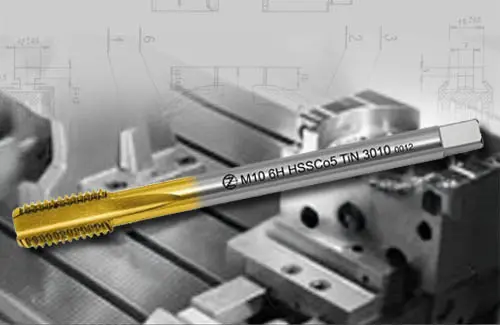The regular price is the current manufacturer's recommended price! FREE shipping for orders over EUR 41,67 within CZ+SK (PPLparcel)

The basic principle of thread production is the formation of a helix on a cylindrical workpiece or in the hole of a nut. This creates an internal or external thread. This can be done either by machining or forming. In the first case, material is removed from the thread groove. During forming, the material is extruded into the shape of the groove.
When creating a thread, it depends on the material, type of material and method of production.
Methods of creating threads:
1. Cutting threads using taps and dies - for manual cutting, small thread diameters.
A. Taps (tap division can be found here) - for producing internal threads in through and blind holes.
B. Threading dies
2. Thread cutting using die heads - for creating external threads up to M64.
3. Thread milling - productive for large thread diameters. For thread milling, the following are used:
A. Disc mills
B. Socket or shank thread mills
C. Rounding head
D. Drilling thread mills
4. Thread grinding - for creating precise threads
A. Longitudinal grinding with a flat wheel
B. Plunge grinding with a multi-profile wheel
5. Thread forming - external threads are formed by cold rolling. Formed threads have greater strength and are 2x more resistant to wear.
A. Flat rolling jaws
B. Rolling wheels
C. Forming taps
Other articles:
Tváření závitů
Jak vybrat správný ruční závitník?
Vrtání a závitování jedním nástrojem
Jak vybrat strojní závitník?